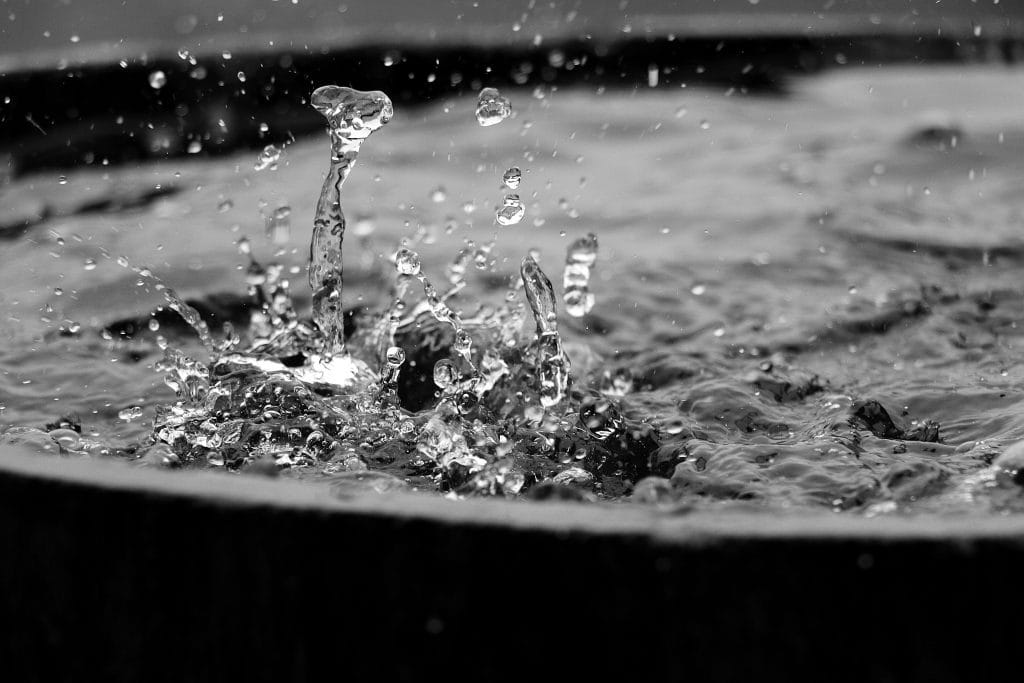
Garden Drainage Solution: Effective Rainwater Harvesting Techniques for Your Home
Rainwater harvesting offers an effective solution to garden drainage issues. By collecting and using rainwater, gardeners can reduce flooding and improve plant health while conserving precious resources. This method not only eases drainage in gardens but also provides a sustainable water supply.

Implementing a rainwater harvesting system involves various components and designs. Key factors include how to store rainwater efficiently and manage overflow effectively. Gardeners benefit from understanding how these elements fit together to create a successful drainage solution.
Many people overlook the financial and environmental benefits of rainwater harvesting. Beyond saving money on water bills, this practice supports eco-friendly gardening efforts by reducing reliance on mains water. Exploring these advantages will motivate gardeners to consider rainwater harvesting as a viable option for their outdoor spaces.
Key Takeaways
- Rainwater harvesting helps alleviate garden drainage problems.
- Effective design and storage enhance water use efficiency.
- The method offers both economic and environmental advantages.
Understanding Rainwater Harvesting
Rainwater harvesting is an eco-friendly method of collecting and using rainwater for various purposes. It helps in reducing water waste and can support sustainable gardening practices. This section will explore the principles behind rainwater harvesting and its many benefits.
Principles of Rainwater Harvesting
Rainwater harvesting involves collecting rainwater from roofs or other surfaces and storing it for later use. The process begins with a catchment area, usually a roof, that collects rainwater during storms.
This water flows through gutters into storage tanks or barrels.
Key components include:
- Gutters: Direct rainwater from the roof to storage.
- Filters: Remove debris to ensure clean water.
- Storage Tanks: Hold the harvested water for future use.
It is important for the system to be designed to prevent contamination and overflow. Regular maintenance ensures efficiency and safety.
Benefits of Harvesting Rainwater
Harvesting rainwater has several advantages. Firstly, it reduces reliance on municipal water systems, which can save money on water bills.
Secondly, it promotes sustainable water use, especially during dry seasons. It allows gardeners to maintain greenery without additional costs.
Other notable benefits include:
- Environmental Impact: Reduces runoff, helping to prevent soil erosion.
- Water Quality: Often, rainwater is softer and free from chemicals found in tap water.
- Flood Prevention: By capturing rainwater, it can reduce pressure on drainage systems during heavy rainfall.
These benefits showcase why many choose rainwater harvesting as a practical solution for managing water resources.
Components of a Rainwater Harvesting System

A rainwater harvesting system consists of several essential parts working together to collect and store rainwater effectively. Understanding each component is important for building an efficient system that meets water needs.
Catchment Area
The catchment area is the surface that collects rainwater. It can be a roof, paved area, or any surface that directs rain into the system. Roofs are commonly used because they have a large surface area and can easily direct water into the gutters.
The shape and material of the catchment area can affect water quality. For instance, metal roofs may impart different substances compared to tile or thatch. It’s important to consider any contaminants that may wash into the system from the catchment area.
Proper maintenance of the catchment area is crucial. Regular cleaning ensures that debris, leaves, and other materials do not block the flow of water into the system.
Gutters and Downpipes
Gutters collect rainwater from the catchment area and direct it to downpipes. These pipes are essential for transporting the water to the storage tanks. Well-designed gutters should be sloped correctly to avoid standing water.
Choosing the right size for gutters and downpipes is key. They need to handle the maximum expected rainfall without overflowing. This is especially important during heavy rainstorms.
Regular maintenance of gutters and downpipes is also necessary. Cleaning them helps prevent blockages and ensures a smooth flow of rainwater. Using mesh screens can help keep leaves and debris out of the system.
Filters and Filtration Systems
Filters are vital in a rainwater harvesting system. They remove debris and impurities from the collected water before it reaches storage tanks. Several types of filters can be used, including mesh screens and sediment filters.
Installing a first flush diverter can enhance water quality. This device diverts the initial flow of rainwater, which often contains the most contaminants, away from the storage tank. This ensures that cleaner water is collected.
Regular maintenance of filters is important too. They should be cleaned or replaced depending on the type used and the level of debris entering the system. This keeps the water quality high.
Storage Tanks
Storage tanks hold the collected rainwater until it is needed. Choosing the right tank is crucial and can depend on factors such as space, the volume of water needed, and budget. Tanks can be made from many materials like plastic, concrete, or metal.
The size of the tank should match water use needs. Larger tanks can store more water but require more space. They should also be placed in a location that is easily accessible for maintenance.
Regular inspection of the storage tank is necessary. Ensuring it is clean and free from leaks prevents wastage. Additionally, a proper lid or cover can help keep out dirt and insects.
Designing a Rain Garden

Creating a rain garden involves careful planning. Key factors include choosing a suitable location and selecting the right soil and plants.
Choosing the Right Location
A rain garden should be placed where it can collect rainwater effectively. Ideal spots include:
- Near downspouts: This allows easy collection of roof runoff.
- Low areas: Natural dips in the landscape help gather excess water.
- Away from trees: Planting too close can lead to nutrient competition and roots interfering with drainage.
It is also important to avoid areas with direct structural drainage. A distance of at least 10 feet from buildings is advisable. This prevents water from pooling near foundations, which can cause damage.
Soil and Plant Selection
Soil type is crucial for a successful rain garden. It needs to absorb water quickly. A well-draining mix often includes:
- Loamy soil for good water retention and drainage.
- Sand to enhance drainage.
- Compost to improve fertility.
Select plants that thrive in wet conditions and can tolerate dry spells. Some good choices include:
- Native perennials: They require less maintenance and support local wildlife.
- Grasses: They aid in soil stability.
- Shrubs: They can help absorb excess water and provide habitat.
Look for plants with deep root systems. These help water infiltrate the soil better. A mix of colours and textures will enhance the garden’s visual appeal while maintaining functionality.
Rainwater Storage Solutions

Rainwater storage systems are important for managing collected rainwater effectively. These solutions can help reduce water bills, conserve resources, and provide a sustainable water supply for gardening and other uses.
Above-Ground Tanks
Above-ground tanks are simple to install and can hold varying amounts of water. They are usually made of materials like plastic, metal, or fibreglass. These tanks can be placed in sunny areas to help keep the water warm, which is beneficial for plants.
They come in different shapes and sizes, making them suitable for different gardens. Some systems allow for easy connection to hoses or irrigation systems. Regular maintenance, such as cleaning the tank and checking for leaks, is necessary to keep the water safe for use.
Underground Tanks
Underground tanks offer a discreet way to store rainwater. They take up less surface space and can be installed beneath gardens or driveways. These tanks are often made from durable materials that can withstand soil pressure.
They allow for larger volumes of water storage compared to above-ground options. However, installation can be more complex and costly. Proper drainage systems must be in place to direct rainwater into the tanks effectively. Regular checks are needed to ensure the system functions well.
Water Butts and Their Uses
Water butts are popular among gardeners for collecting rainwater from gutters. They usually have a spout at the bottom for easy access. Water butts are typically made from plastic and are lightweight, making them easy to move.
These butts can hold a few hundred litres of rainwater, providing a simple solution for irrigation. They can be connected to a downpipe for efficient rainwater collection. Using water butts helps to conserve mains water and encourages sustainable gardening practices. Proper maintenance is key, including keeping the lid closed to prevent debris contamination.
Optimising Water Yield

Optimising water yield from rainwater harvesting systems is essential for effective garden drainage solutions. Proper planning and implementation can significantly enhance the amount of rainwater collected and stored.
Maximising Collection
To maximise rainwater collection, it is important to choose the right catchment surfaces. Roofs made of materials like tiles or metal work best as they allow for better water flow. Regular cleaning of these surfaces ensures that debris does not block the flow.
Using a carat tank for storage increases total capacity. It’s vital to install the tank at a slight tilt to facilitate easier drainage. Additionally, adding a first-flush diverter helps by directing the first few litres of rain away, which can contain contaminants.
Installing downspouts strategically directs rainwater into the collection system. Consider placing them near garden areas where water is needed most. Regular maintenance of all components ensures efficient performance.
Drainage and Overflow Systems
Effective drainage and overflow systems are essential for managing rainwater in gardens. They can prevent water accumulation and protect plants and structures from damage. This section focuses on soakaways and their integration with existing drainage systems.
Soakaways and Their Function
Soakaways are underground structures designed to collect and infiltrate rainwater into the ground. They help manage surface water runoff, which can prevent flooding and soil erosion. A soakaway typically consists of a pit filled with gravel or rubble.
Benefits of Soakaways:
- Reduces water logging in the garden.
- Helps recharge groundwater supplies.
- Minimises the need for external drainage bonds.
When installing a soakaway, it is important to consider the soil type. Sandy soils allow for quicker drainage, while clay soils may require larger soakaways. The size and depth should be tailored to the area’s rainfall and soil conditions for optimal performance.
Integrating with Existing Drainage Systems
Integrating soakaways with existing drainage systems can improve garden water management. This can involve connecting downspouts from gutters directly to the soakaway.
Key Steps for Integration:
- Assessment: Evaluate the current drainage system and identify areas for improvement.
- Design: Plan a layout that directs water into the soakaway effectively.
- Installation: Ensure proper connections are made to avoid blockages.
Combining soakaways with traditional drainage solutions, like trenches or French drains, can provide a more comprehensive approach. This holistic system can effectively manage stormwater, ensuring a healthier garden environment.
Pump Systems and Water Pressure
Pump systems play a crucial role in managing water pressure and ensuring effective rainwater harvesting. Choosing the correct pump is vital for optimal performance and efficiency.
Selecting the Right Pump
When selecting a pump, the first factor to consider is flow rate. This measures how much water the pump can move per minute. Common flow rates for garden pumps can range from 100 to 500 litres per hour. The right flow rate depends on the size of the garden and how much water is needed for irrigation.
Another important aspect is the pump’s head height, which indicates how high the water can be pumped. For garden use, a head height of 5 to 10 metres is often sufficient. Other features to look for include durability, energy efficiency, and whether the pump can handle solids if necessary.
Considering these factors will help in choosing a pump that meets specific garden needs.
Maintaining Rainwater Systems
Rainwater systems require regular upkeep to function properly. Maintenance ensures that water is collected efficiently and remains clean. This section will address essential tasks and features in self-cleaning systems.
Regular Maintenance Tasks
To keep rainwater systems in good working order, regular maintenance is necessary. Key tasks include:
- Inspecting Gutters and Downpipes: Ensure these are free from leaves and debris. Blockages can prevent proper water flow and lead to overflow issues.
- Cleaning Filters: Regularly check and clean any filters used in the system. Dirty filters can hinder water quality and flow.
- Checking for Leaks: Inspect all joints and connections for leaks. Sealing these areas can help maintain efficiency and conserve water.
- Testing Pumps: If the system includes a pump, it should be tested regularly. Proper functioning is crucial for moving water where it’s needed.
Performing these tasks at least twice a year helps to keep the system running smoothly.
Self-Cleaning Systems
Self-cleaning systems are designed to reduce maintenance efforts. These systems often include:
- Automatic Filters: These can remove debris without manual cleaning. They work by using a back-flush mechanism to clear trapped particles.
- Design Features: Many self-cleaning systems have sloped surfaces. This design helps water carry debris away, reducing build-up.
- Monitoring Systems: Some have sensors that alert users when maintenance is needed. This helps keep water quality high without constant checking.
These features save time and effort while ensuring the system remains effective. Using self-cleaning technology simplifies care and maximises the benefits of rainwater harvesting.
Rainwater Harvesting and Flood Mitigation
Rainwater harvesting plays a crucial role in managing rainwater and reducing the risk of flooding. It helps control surface runoff and offers a sustainable solution for garden drainage. Implementing these strategies can lead to healthier gardens and improved water management.
Reducing Surface Runoff
Rainwater harvesting reduces surface runoff by collecting rainwater from roofs and hard surfaces. When rain falls, much of it runs off and can lead to flooding. By capturing this water, it lessens the amount that flows directly into drains and waterways.
This practice encourages infiltration into the soil. As rainwater is stored in barrels or cisterns, it seeps into the garden instead of overwhelming drainage systems. It also promotes healthy soil and plant growth. Additionally, using less municipal water for gardening saves resources.
Alleviating Flood Risk
Implementing rainwater harvesting systems can significantly alleviate flood risk in urban and suburban areas. When combined with permeable surfaces, such as gravel driveways or rain gardens, these systems allow water to absorb into the ground.
By managing excess rainfall, gardens become more resilient to flooding. Stored rainwater can also be used during dry spells, providing a reliable water source. This approach reduces dependency on municipal water supplies, further enhancing sustainability. It creates a balance in water management that benefits both gardens and local ecosystems.
Connecting to Mains Water Supply
Connecting a garden drainage system to the mains water supply can enhance its efficiency and usability. It is essential to ensure proper integration with existing systems and consider safety measures like backflow prevention.
Backflow Prevention
Backflow prevention is vital when connecting to mains water. It prevents rainwater from flowing back into the mains supply, protecting drinking water from contamination.
A common solution is the installation of a backflow prevention valve. This device automatically closes to seal off the mains supply when it detects reverse flow. Regular maintenance checks are necessary to ensure the valve works correctly.
Installation Steps:
- Locate the mains water entry point.
- Install a backflow prevention valve on the line.
- Test the system for leaks and proper operation.
Proper installation not only safeguards health but also complies with local regulations regarding water quality.
Mains Water and Rainwater Integration
Integrating mains water with rainwater systems optimises water usage in gardens. This approach allows the use of collected rainwater during dry spells, reducing reliance on mains supply.
One method is to have a dual supply system. This system can switch between rainwater and mains water as needed. This includes using a controller that automatically detects water levels in the rainwater tank.
Benefits:
- Reduces water bills.
- Ensures gardens stay hydrated even in drought conditions.
It is crucial to consider local regulations when designing this system. They may dictate how mains water and rainwater can safely coexist. Following these guidelines ensures a sustainable and efficient garden drainage solution.
Financial and Environmental Benefits
Implementing a garden drainage solution through rainwater harvesting presents both financial and environmental advantages. These benefits enhance sustainability and help manage resources effectively.
Lowering Water Bills
Rainwater harvesting can significantly reduce water bills. By collecting and using rainwater for irrigation, homeowners cut down on their reliance on municipal water systems.
Using a rainwater collection system, such as a Graf Carat tank, allows users to store large amounts of rainwater for later use. When it rains, this system captures water that would otherwise go to waste.
This collected water can be used for gardening, washing vehicles, or even topping up ponds. Each litre saved from the tap translates to savings on monthly bills.
Over time, these savings can add up, making rainwater harvesting a smart financial choice.
Contributing to Sustainable Practices
Rainwater harvesting supports eco-friendly practices and promotes sustainability. By using rainwater, individuals contribute to a more efficient water system and reduce strain on municipal supplies.
This method helps avoid runoff that can pollute local waterways. When rainwater is collected rather than allowed to flow away, it allows for better ground absorption and reduces the risk of flooding.
Using less treated water also cuts down on energy used in water treatment, further supporting environmental goals. These efforts can benefit communities and help protect natural resources.
Graf Carat Tank and Vehicle Loading
The Graf Carat tank is a popular choice for rainwater storage. It is designed for easy installation and can hold substantial amounts of water.
When it comes to vehicle loading, the tank’s design accommodates various needs. It can easily store water for washing cars or maintaining gardens without affecting the vehicle’s loading capacity.
The Graf Carat tank provides a reliable solution for harvesting rainwater, ensuring that homeowners can access eco-friendly water sources for everyday tasks. This combination of practicality and sustainability makes it a valuable investment for environmentally conscious individuals.

